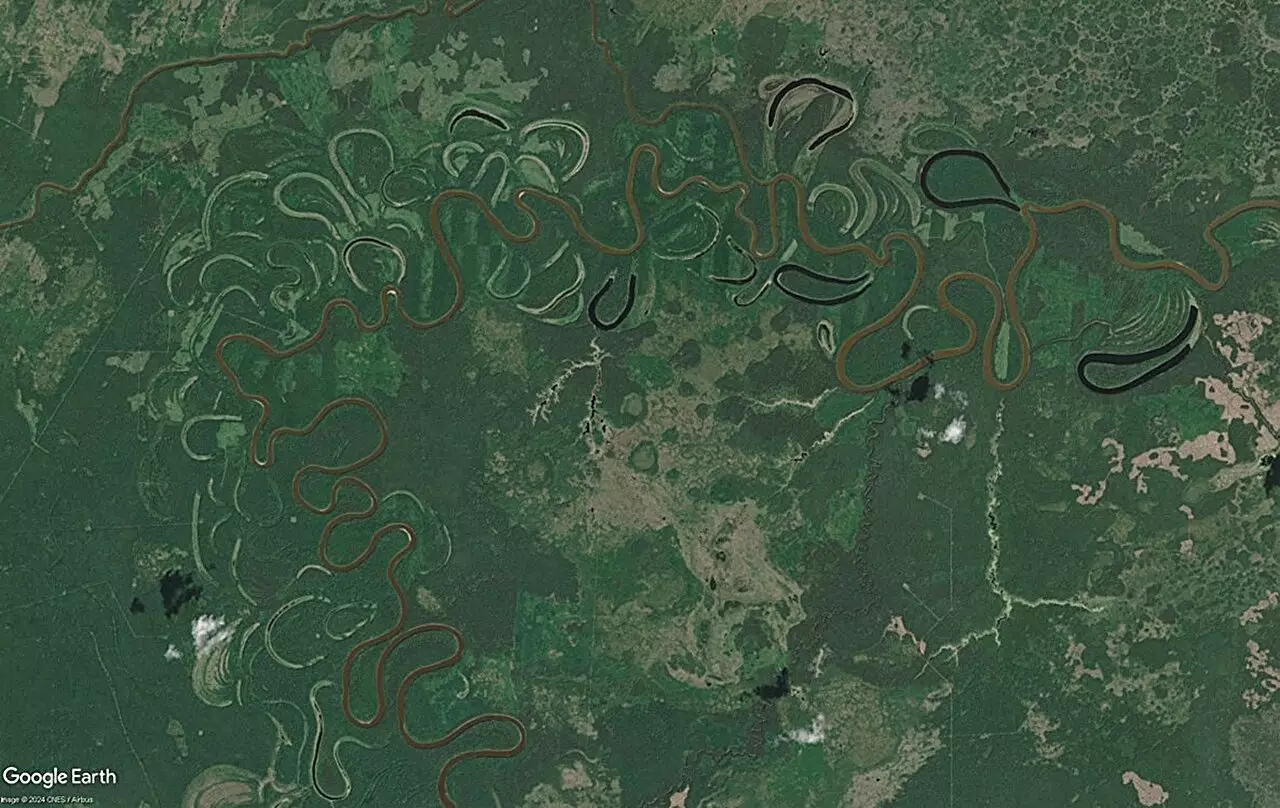For decades, the characterization of rivers has largely depended on traditional methods that emphasize plant forms and sedimentary deposits. These approaches have provided valuable insights but have limitations in fully understanding the intricacies of river systems. Riccardo Maitan, a dedicated Ph.D. candidate at the University of Padova, proposes a transformative methodology that shifts the focus toward the hydrological behavior of rivers, particularly through the lens of morphodynamics. By scrutinizing hydrological metrics, such as the variability of peak discharge, Maitan aims to reveal the underlying dynamics that govern meandering rivers.
The essence of Maitan’s research lies in its reliance on a substantial body of empirical data. By utilizing over 15 years of information from the United States Geological Survey (USGS) and Google Earth imagery, he undertakes a comprehensive analysis of 22 rivers—spanning an impressive 5,500 kilometers. His recently published study in the journal Geology, part of a broader initiative aligned with sustainable development geosciences, hints at robust findings that could revolutionize how we perceive river systems and their ecological significance.
The Role of Bend Cutoffs
One of the pivotal elements in understanding river dynamics is the phenomenon of bend cutoffs. These events are fundamental in shaping the morphology of meandering rivers on alluvial plains. The term “bend cutoff” refers to the process through which rivers bypass bends in their course, leading to significant alterations in their flow patterns. Maitan identifies two primary types of cutoffs: neck cutoffs and chute cutoffs. Neck cutoffs are characterized by the breach of a land bridge between bends, facilitating the river’s evolution. In contrast, chute cutoffs occur when rivers establish new channels through point bars, ultimately truncating the life cycle of meanders.
Exploring examples like the Purus River—which exhibits neck cutoffs—and the Powder River, representing chute cutoffs, Maitan and his team delve into the myriad factors influencing these cutoff regimes, including climate variables and ecological dynamics. Their research emphasizes that the variability of overbank discharges plays a pivotal role in determining a river’s cutoff character. Rivers marked by stable discharge patterns lean towards neck cutoffs, while those subject to intermittent intense flooding exhibit chute cutoffs.
Reconstructing Paleohydrology
This innovative research ushers in a novel avenue for understanding past hydrological regimes through oxbow trace analysis. By examining the geomorphic signatures left by past river cutoffs, scientists can reconstruct ancient hydrological patterns of meandering rivers, fostering a deeper comprehension of historical climate behavior. Such insights are critical, as they equip us to make better predictions about future river dynamics—an understanding that is becoming increasingly relevant in the face of climate change.
Moreover, Maitan’s findings hold significant implications for anthropogenic impacts on river systems. Human interventions, such as damming, are often implemented to mitigate flood risks by dampening hydrological fluctuations. However, Maitan’s research illuminates a potential downside—these actions can shift a river towards a more stable cutoff regime, potentially increasing the frequency of bend cutoffs and leading to altered sediment dynamics. This chain of events raises critical questions about sediment residence time and its broader implications for carbon flux in alluvial plains, echoing environmental and ecological consequences that extend beyond river systems.
Rethinking River Management
In light of these revelations, the dialogue surrounding river management must evolve. Maitan’s research offers compelling evidence that understanding hydrological variability is essential for preserving the intricate balance of riverine ecosystems. As our understanding of the interplay between river dynamics and surrounding environments grows, so does the urgency of reevaluating existing management practices. Embracing a more holistic approach that acknowledges the fragility and complexity of river systems can lead to more sustainable outcomes.
In essence, Maitan’s pioneering work challenges us to rethink not just how we characterize rivers but also how we manage them in an increasingly altered world. By highlighting the delicate interplay between human actions and natural processes, he underscores the need for informed decision-making that prioritizes ecological integrity over mere utilitarian considerations. The future of riverine ecosystems may well hinge on the lessons we glean from such transformative research.


Leave a Reply